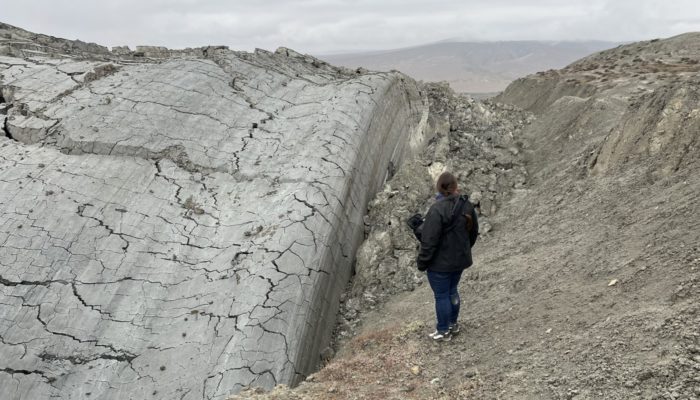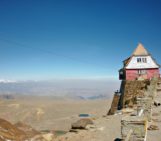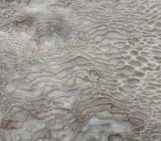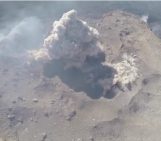
In Gobustan, Azerbaïdjan, gases such as methane or carbon dioxide are emitted in the underground. They lower the density of the overlying sediments which are pushed upwards by buoyancy. Fingering instabilities occur, where more mobile and lighter sediments form vents and mud volcanoes with upwards moving material. Many small scale cones are deposited when the conduits reach the surface, depositing the heavy sediments behind the water and gas flow, forming so called mud volcanoes. Meter sized ones are termed gryphons, small ones are present around this structure. The structure on the picture is unusually large. It is in terms of flow, somewhat similar to a giant paste slowly extruded from the ground. The extrusion forms a 4 to 5 m thick and larger than 10 m wide structure flowing over the ground. It extends over 1+ km, and is active since >100 years. The slow motion is not directly perceivable to human eye. The flowing body fractures and fragments, becoming over a few hundreds of meters gradually divided in smaller blocks as the flow progresses.
The picture was taken during a field trip in early May 2022, in a collaboration between teams of geophysicists, geologists and geochemists of UFAZ (French Azerbaidjanese University), Baku, Azerbaïdjan, the Academy of Sciences of Azerbaïdjan, and the Institute for Earth and Environmental Sciences of Strasbourg, ITES, University of Strasbourg / CNRS.
Photo by Renaud Toussaint, description from imaggeo.egu.eu.
Imaggeo is the EGU’s online open access geosciences image repository. All geoscientists (and others) can submit their photographs and videos to this repository and, since it is open access, these images can be used for free by scientists for their presentations or publications, by educators and the general public, and some images can even be used freely for commercial purposes. Photographers also retain full rights of use, as Imaggeo images are licensed and distributed by the EGU under a Creative Commons licence. Submit your photos at http://imaggeo.egu.eu/upload/.




